A few weeks back, our very own graphic designer Pete Holm ordered a nifty little moon lamp --- a small, round object with a texture matching the moon and a light source inside. This little lamp has been popping up all over the internet lately, and we were all pretty stoked to see it in person.
Image Courtesy of Moon Lamp
When the product arrived, we immediately noticed that it was a 3D print, something Pete was not anticipating. The product photos definitely do not look like 3D prints.
To be fair, the product page clearly discloses the materiality of the product: "INNOVATIVE 3D PRINTING TECHNOLOGY." Nonetheless, Pete didn’t read that when he ordered it, and when he got it there was some air of disappointment. In his own words, "For some people, getting a 3D printed product might be like OMG cool! It's a 3D print! But for makers, I'm like oh, I could have just made it myself." Pete uses the 3D printer a lot and is comfortable with electronics, which of course brings up the age-old question, “Why buy when you can DIY?!”
In a very SparkFun move, we were on Thingiverse no less than 30 seconds later looking for some moon files. And we found them. In fact, we found a lot, in many different sizes, with plenty of design files available online under the Creative Commons license. It's available for download for free. Pete may have been kicking himself, but I was stoked to DIY a very cool product with very little effort. This is going to make an incredible last-minute gift!
I downloaded two sizes, the 140mm and the 60mm.
The moon print is broken up into two pieces so that you can place your light source inside before gluing it shut. All in all, the larger 140mm moon took about 17 or 18 hours to print, and the 60mm took about four hours. I debated a lot regarding which light source to use, but I ended up going with our fairy lights. I used these because of their material nature and because I had a lot of them sitting around in different colors. The wire in the fairy lights makes it so they truly fill up the area inside the moon, allowing for an even inner glow. Plus, some of the LEDs push against the edge, which creates a really lovely visual effect.
Once the fairy lights were threaded through the small hole in the center of the moon's cap, I used a drop of hot glue to secure the lights in place.
Then I started putting them inside the moon's cavity, and simply glued the top to the bottom with E6000 glue.
The two pieces don’t line up exactly, but I did my best to find a good fit. Where there was a light leak, I used a touch of white puff paint to seal it.
The result? JUST AS GOOD AS THE PURCHASED PRODUCT! I didn’t even sand it, guys, and it looks AWESOME. Sanding around the glued seal is definitely recommended if you have the time, but in any case, my printed moon lamp looks dope.
Ok, so this was stupid easy to make. No modeling or electronics skills required. Just hit print, wait awhile, thread some LEDs, stuff them in a cavity, and glue it all together. I checked back on the product page, and while the lamp is currently on sale for $29.99 (which is already pricey for what you get), it usually sells for $49.99! I don’t know if it’s just me, but that feels a little bit outrageous. I could sell these for $10 and make a decent profit off of them. I have to say, from where I was sitting, the for-sale moon started to seem like a real rip-off. A cheaply made product with an insanely high price tag.
The truth is, a lot of people are selling a version of this 3D printed lamp, and in a lot of cases for less than $50, but still for like $20--$30. Based on my experience making this thing, that's too much money.
Listen, I know many individuals do not have access to a 3D printer. I know a lot of folks are interested in purchasing 3D prints. Just because I think i's a rip-off doesn't mean all other consumers feel the same. I'm not a huge fan of the look of 3D printed plastic, but I'm sure some people are really into it. I know I might be jaded because for the past few years I have been able to print whatever the heck I want off Thingiverse for free with printers at school or at work. I know there are specific rules about what is allowed with regard to selling these products under the Creative Commons license. I don’t pretend to know what is legal and what is not, and I’m certainly not proposing that these objects not be for sale.
That being said, I started thinking about seller/buyer responsibility in the 3D printing field, especially when a for-sale product is all over the internet to download for free. I have been asking myself if there are any moral or community responsibilities on the seller to link to the design file. Or is it up to the buyer to find out exactly how this object is made and do a little research to see if it can be made at home? These are not questions of legality but more opinion based.
For a lot of us makers, there are things we purchase that we know we could have made. Sometimes buying things makes more sense than making them because the effort and time outweighs the cost. But in the case of the moon lamp at the price of $20--$50, I believe that the cost of time/effort/materials is decidedly less, and I know that if Pete had found that lamp and then seen a link to the STL, he would have 100 percent made this lamp himself.
To build your own moon lamp, you will need the following items:
You will also need hot glue, E6000 glue and white puff paint.
White ABS filament like the kind I used can be ordered directly from LulzBot. Don't have a 3D printer and not sure how to access one? Check out this very helpful Maker Map to find a makerspace near you!
Let us know your thoughts on the 3D printing marketplace in the comments below!
Interested in learning more about LEDs?
See our LED page for everything you need to know to start using these components in your project.


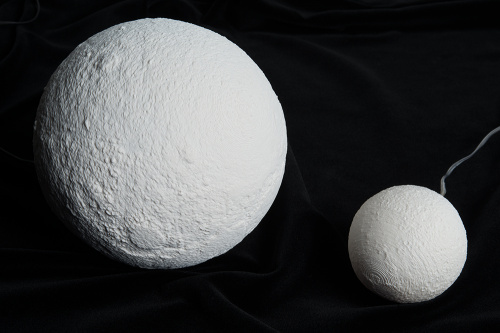
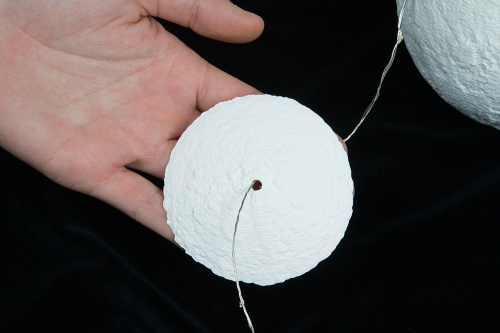
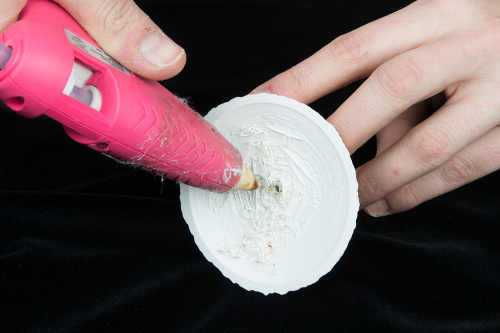
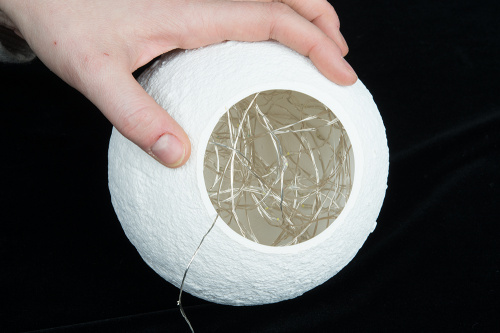

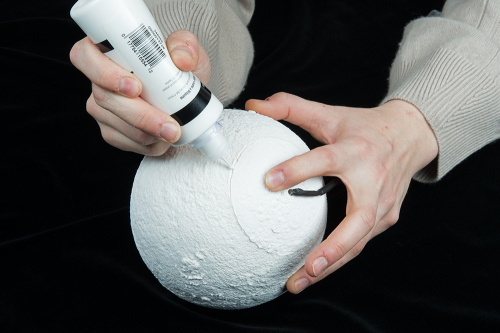

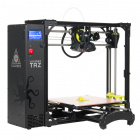
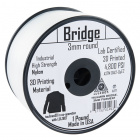








No, I really don't think you could make money selling them for $10 each. Maybe you think so because you have free access to the printer, but the cost to make something is way more than the cost of materials. You are not considering the cost of the space to set it up, the cost of the utilities to support this space, cost of buying the printer, opportunity cost of what you could be doing with your time/money/printer/space, etc. Let's say you get one order a week. At least once a week you need to print, package it up, print a mailing label and make a trip to the shipper. What is your time worth to do that? You know the saying "You can't please everyone"? The corollary is "No matter what you do, you are going to really piss off at least one person". And it takes a lot of time dealing with that one person, which takes away a lot of the fun of running a business. I'm sure it's kinda fun for a maker to print him/herself one, but I bet after the 15th one it might get a bit monotonous. And don't forget the cost of running a business! How much of that $10 do you think Uncle Sam is going to consider his fair share? How are you going to get paid? PayPal takes a couple of percent. Yes, I've run a successful business or two. No, I don't think I'll ever do it again.
On the other hand, I don't think I would pay more than $10 for this. I'd rather just print one for myself. It's kind of fun owning a 3D printer... as a hobby.
(Re-reading this I think I'm coming across as a grumpy old fart. While it might be true I'm not trying to be negative, just share a little bit of my experience.) - Steve
Honestly I was going to say about the exact same thing. Guess that makes me a grumpy old fart as well.
I'm a big fan of giving credit where credit is due, so yes, I think if someone is making money off of someone else's design, they should absolutely link back to the original product. That said, do I think that everyone selling a 3D printed design is going to do that? Probably not. Probably not even most of the people. Much like Colecago, I would be annoyed if someone started selling a design I made without attribution.
As far as the relative value of a good goes, that varies substantially from person to person! For you, Feldi, or Pete, who both have access to and the technical knowledge to use a 3D printer, it may seem like a complete rip-off to pay $30 for a relatively simple 3D printed part. For me, on the other hand, who doesn't have a 3D printer, doesn't know anyone who has one, and is at least an hour's drive from a makerspace, $30 doesn't seem so bad from my point of view. Sure, you would probably make a bit of money selling these at $10 a pop, but is that really that reasonable a price? Would you send me one tomorrow if I sent you $10? How about making a living selling them? To me, paying good money for someone else to 3D print something for me is like paying a plumber or a stonemason. Sure, I could do it myself, but I (sometimes) pay an expert to do it better and faster than I could. In that transaction, I'm paying for their time, materials, thousands of dollars in tooling, and above all, their expertise in a field I may know very little about.
Thanks for bringing us awesome content every week and keep up the great work!
Edit: That moon would be really rad if you could partition off the inside and use addressable LEDs to highlight some of the larger features individually. It would make a good educational tool. Tiny LEDs could even be used as pinpoints to locate the various places humans have landed!
Another cool thing would be to use it as a display to mirror the current phase of the real moon, maybe with 2 black plastic hemispheres inside that could be driven by motors to open and close like an aperture.
Thanks for sharing another really interesting perspective! I had a feeling the value of a print might be higher to those who don't have as easy access to printers, and the nature of my job adds some inherent biases on this topic. I enjoyed how you likened it to hiring a plumber, it's an oddly poetic way of looking at the market.
I love the idea of adding addressable LEDs to the moon and the education application. Definitely something to think about for future projects....
Really glad you are enjoying our blog :)
That's really amazing.
Yeah, using 3D printing technology. I saw how to make it on a website before, here:How to make 3D printed moon lamp. They write the same as yours. You can check it for a reference. But I saw they have customized one, I think how did they add pictures/sentence engraved on the moon? Looks cooler than your picture .lol
This particular feature struck a nerve with me, perhaps because it is so daft, yet was actually blasted out to the masses in the regular advertising email.
With all hobbies, it is important to clearly understand what things you want to actually spend time doing versus things that you don't. Most people go through phases of "burn out" with their hobbies. Think of all the guys with half restored cars sitting in a garage stall for example. Usually this is because they have hit a part of the project they don't enjoy (or ran out of money)
If your hobby is electronics, and your hobby is not other things like 3d printing, then you have to look at a project like this Moon and decide, do I find the electrical portion of the project interesting enough to spend my limited hobby time on it? If so, how much of my limited hobby time do I want to spend? The answers to these questions will dictate how you go about it.
With regards to price, the reality is very few people understand what the real total cost is to make something. The reality is no one wants to pay for anything. People are cheap, cheap, narcissistic, self absorbed consumption monsters that expect to have every whim delivered on a silver platter with no effort expended on their part. This sounds harsh, but I think anyone that has had a go at selling to the general public would agree.
The thing that baffles me though, is the "makers" are worse about this than the general public. The "makers" should absolutely understand better than anyone what the real cost is to do these things, and yet you put up comments about being able to turn a profit on these at $10 a pop. It is ludicrous, and it highlights the fact that people have no concept of the value of their time. This kind of stuff "poisons the well" for everybody else out there that is having a go at making money selling stuff like this. Someone, somewhere is googling moon lamps, and they will eventually find this article, and see these comments, and conclude the whole thing is a rip off and not buy it. Maybe that person would have loved it, maybe the person they gifted it to would have realized a bit about what it was and it would have sparked their interest in the "making" hobby, maybe it would have burned their house down. Either way, someone would have learned something, which is the whole point of this hobby.
Sarcasm and humor don't translate well to little text boxes. Please read this with a smile and not a scowl, that might help.
I would be careful about advertising that maker map. I did not check all the sites. But the ones around the Austin, TX area are seriously out of date. Five out of the eight shown have no active web site associated with the web address provided by the tool (I get a 404 error when I click on it). One of these is the Techshop in Round Rock. I think just about everyone knows all of the TechShop's went bankrupt a few months ago. Another is a listing for SXSW Create. This doesn't exist anymore and the listing states it is SXSW 2013! The remaining ones don't really look like makerspaces. They look more like retail stores that provide materials for makers.
It is interesting that one makerspace that is still active in the Austin area is NOT on that map: http://atxhs.org/wiki/Welcome_to_the_ATX_Hackerspace_Wiki
Perhaps it is too new to be on that map?
This might be a project to break out the "glow in the dark" filament.
Great work!
I was recently informed that there were people selling my design on Etsy, some with and some without giving credit, none of which had contacted me https://www.thingiverse.com/thing:915840
Now selling my design I eventually came to the opinion was okay because not everyone has a 3D printer and if I want my design to flourish there needs to be paths for people to get it, and in the end they were selling the material and machine time to do so, and I think creative commons share-alike allows such a transaction. Now those selling without giving credit not only breaks the creative commons licensing but also means they are not selling just the plastic but the design in general because they don't give the option to those with printers to do it themselves, and it goes from a grey area of value-added proposition of plastic and machine time to directly selling my creative work as their own.
In the end I filed 3 claims on Etsy against the 3 sellers that didn't give credit and got the designs pulled and 2 of them settled the claim by adding links to the original design and the other one never responded to the pulled design. I also changed my designs to all non-commercial so in the future people need to ask me before selling my designs
Wow! Thanks for sharing your experience from the perspective of a designer. One thing you said is really sticking with me. "Now selling my design I eventually came to the opinion was okay because not everyone has a 3D printer and if I want my design to flourish there needs to be paths for people to get it" To me this statement demonstrates that you truly embody OS values. As you know, at SparkFun we completely agree! I think it's beautiful that you care more about people having access having your designs that you do about other sellers profiting from your work. :)
As a designer I have had people selling my designs. I have two types of things I load to Thingiverse general stuff which I license as CC-BY-SA, and others which I put more effort or ingenuity into, which I license as CC-BY-NC-SA, as I would not want anyone profiting from my work. So I'm quite happy for individuals to make the latter, or make one for a friend (even being compensated for consumables), but as soon as profit is involved that really gets me annoyed. Someone contacted me about my Dyson tool holder and said she didn't have a 3D printer, so I loaded it to Shapeways so she could have one, and I had a small markup. That started a small hobby of other stuff for sale there.
A few days ago someone in Norway notified me, at Thingiverse, that prints of two of my designs were being sold online there. I have sent a email asking for them to be take down, there is little else that can be done. The hobby income doesn't cover costs, let alone lawyers. This has happened before. The unfortunate effect is that I tend to load fewer such things to Thingiverse, or load a basic version that is less attractive or fewer features than one I will sell.
Ebay etc. are full of people selling others designs without permission, if you haven't seen the problem in this area, have a read of this (from 2016) and some of the comments. The worst thing is when challenged they think they have the right to do so using some really creative logic that has zero relationship to the law.
Do you sell your designs which you license as CC-BY-NC-SA? I personally list all my designs as CC BY 3.0 (even the ones I sell on Tindie) because they're not important to my livelihood. I sell them just so others have easier access to my designs. I don't put enough effort into them to make them into a viable business. Personally I think that as long as I'm not actively trying to make a business with an item, I'd be glad if someone else took the effort to do so. Designing an item is (not even) half the battle. Marketing, producing, shipping, etc is really where I see the most effort so someone deserves to make money there, even if the product they are selling is not of their own design.